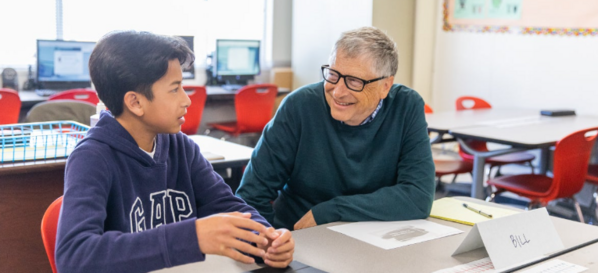To read more of Bill Gates' article, please click here.
Do you know how to calculate the volume of a prism? What about a pyramid? And what does either have to do with movie theater popcorn?
Back in April, I spent the day at Chula Vista Middle School in Southern California learning what these questions have to do with graduating from college. I was there to meet with school and district leaders and join an eighth-grade math class taught by a remarkable teacher named Amilcar Fernandez, who also runs the math department and develops its curriculum. Over the past few years, Mr. Fernandez has been trying to transform how Chula Vista teaches what is widely cited as American students’ “least favorite subject”—and has been since at least the year I was born.
That is why the Gates Foundation’s K-12 education strategy is focused on improving student outcomes by modernizing math education. To us, that means three things. First, it should be personalized to students and their respective interests, abilities, needs, and goals, with feedback tailored to them and opportunities to work on some topics or problems of their choosing. Second, it should prioritize interaction and communication by encouraging students to talk through their problem-solving approaches out loud and collaborate to find the answers, which can build their confidence and allow them to learn from each other. Third, it should be applicable (and applied) to complex, real-world problems that students know exist outside the classroom—from designing a budget to estimating population growth.
I got to see these three key concepts in action during the day I spent in Chula Vista. The school is part of one of the foundation’s two Networks for School Improvement run by the High Tech High Graduate School of Education. They’re focused on helping more eighth graders get on track by supporting teachers like Mr. Fernandez as they work to improve the way math, specifically, is taught and learned—and how students are engaged in the process.
I loved watching the students answer each other’s questions, and I was impressed by how Mr. Fernandez empowered all of them to speak up. As he explained to me afterward, one of the reasons he’s able to do that is because of the feedback he receives and then implements from frequent student surveys. While he certainly wants and solicits student input on his performance as a teacher, the specific surveys he gives do more than that: They also measure engagement and relevance by allowing students to give feedback on how they are experiencing the classroom.



Comments (1)